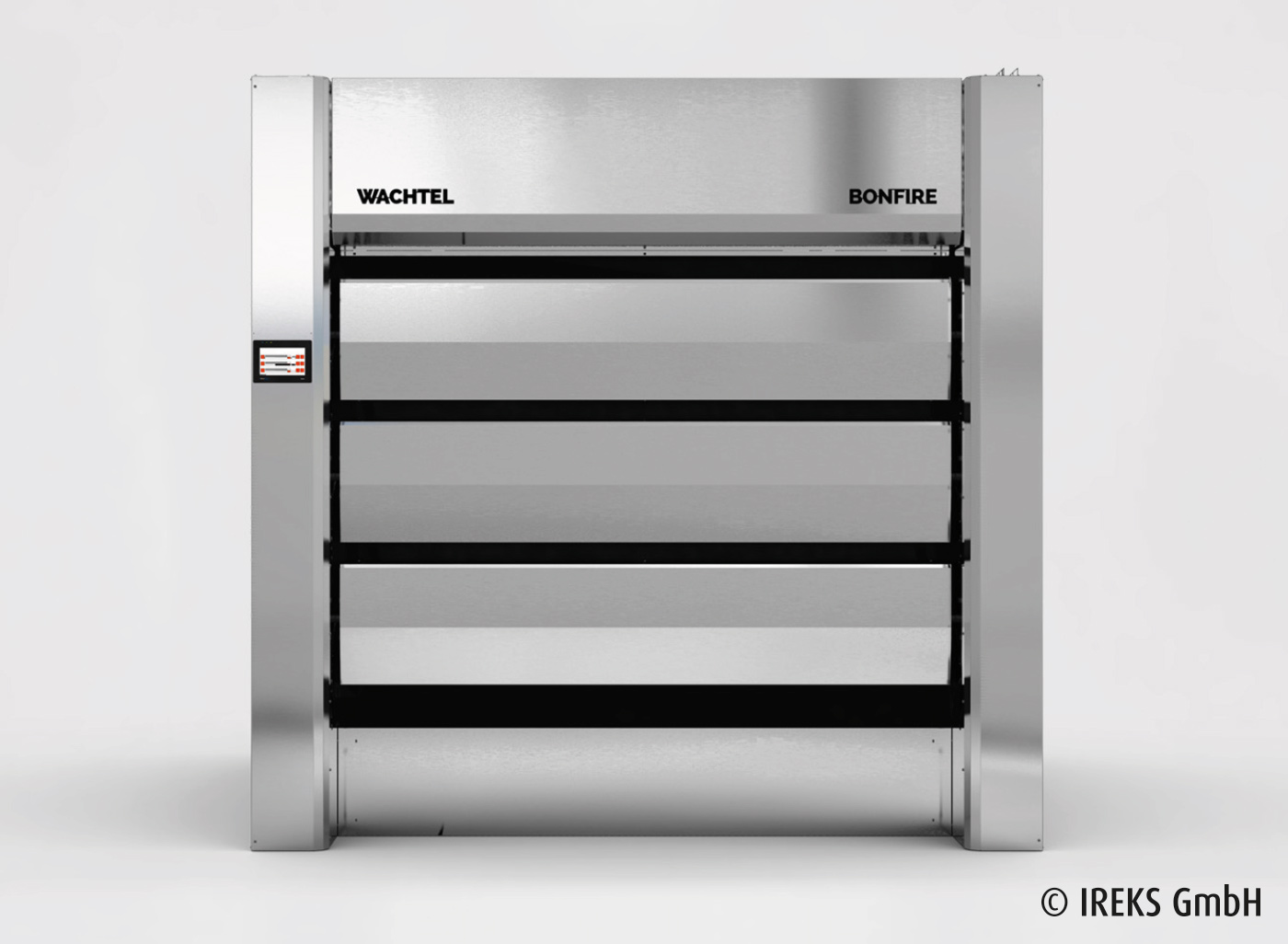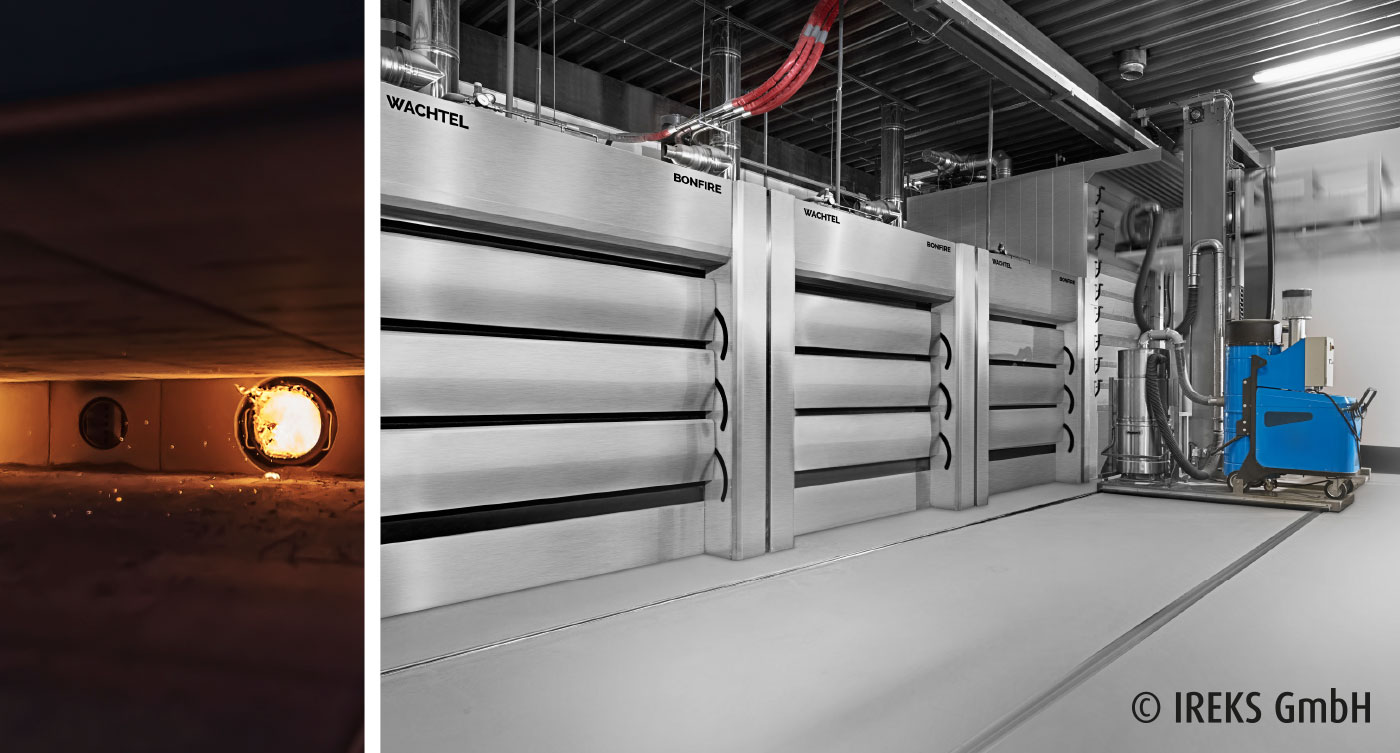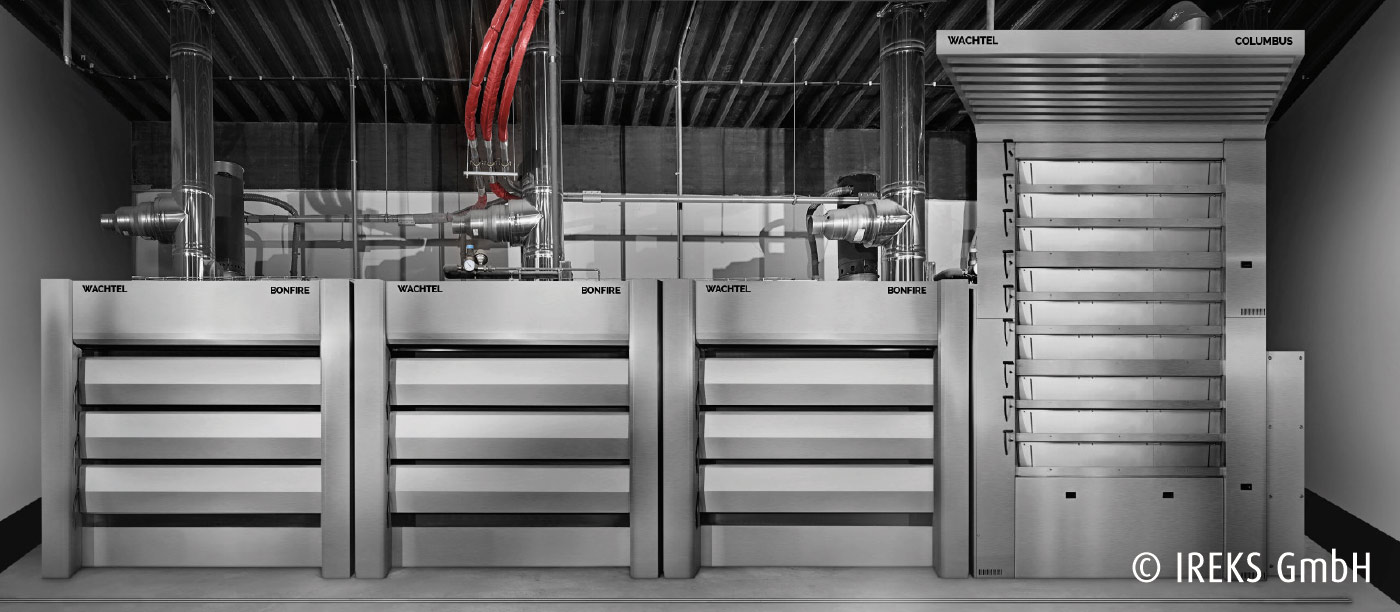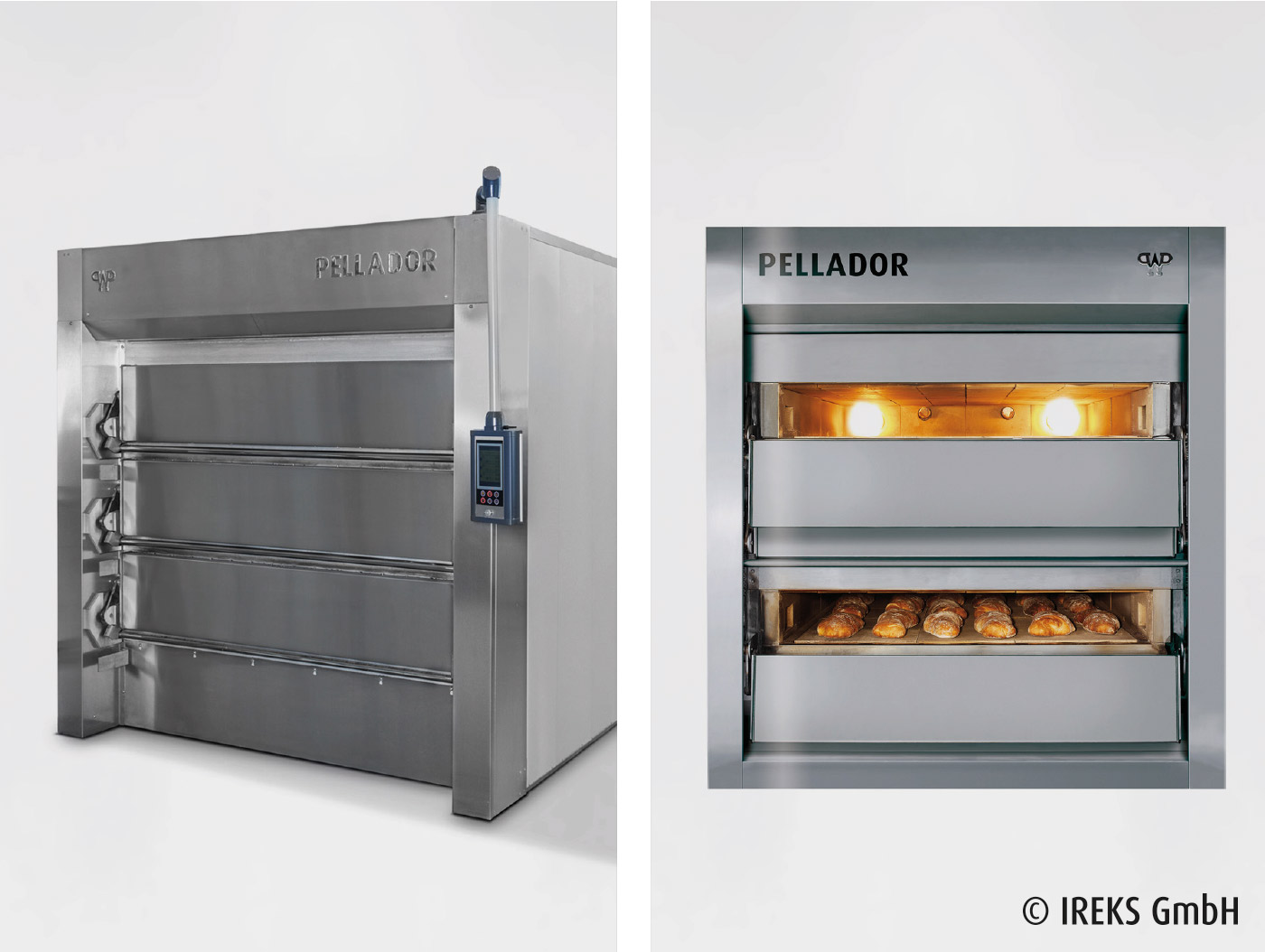Until the end of the 19th century, it was common practice to work with directly heated wood-fired ovens. The baking chamber was heated directly and had to be cleaned after heating. Heating involved quite a lot of time and effort and the level of dirt was high for the bakery and the staff. At the beginning of the 20th century, wood-fired ovens were replaced by ovens heated indirectly with coal, which then, in turn, were replaced by modern deck ovens heated by gas, oil or electricity (around 1955) and rack ovens (around 1970) (cf. Skobranek 1998).
Around the turn of the century, interest rose in wood-fired ovens as original baking ovens for the manufacture of exclusive products with a distinct crust and a rustic appearance. Nowadays, some manufacturers sell directly heated wood-fired ovens in a deck oven construction. Here, direct heating takes place via tunnel burners in the back wall of the oven. Wood pellets are fired via the burners to heat the baking chamber. Each deck has its own burner, whereby various temperatures can also be realized. After the heating process, the remains of the ashes are removed with the aid of a high-performance vacuum cleaner.
To have a good heating storage capacity, fire brick is used for the baking chamber. These modern wood-fired ovens have steam devices and can be fitted with automatic loading systems. Bread from such ovens may be called wood-oven bread according to the German “Leitsätze für Brot und Kleingebäck” (guidelines for bread and morning goods).
The limitations of these wood-fired ovens are therefore significantly lower than their predecessors using wood or coal for heating. Nevertheless, the wood-fired ovens are less flexible than deck oven systems heated by gas, oil or electricity.




